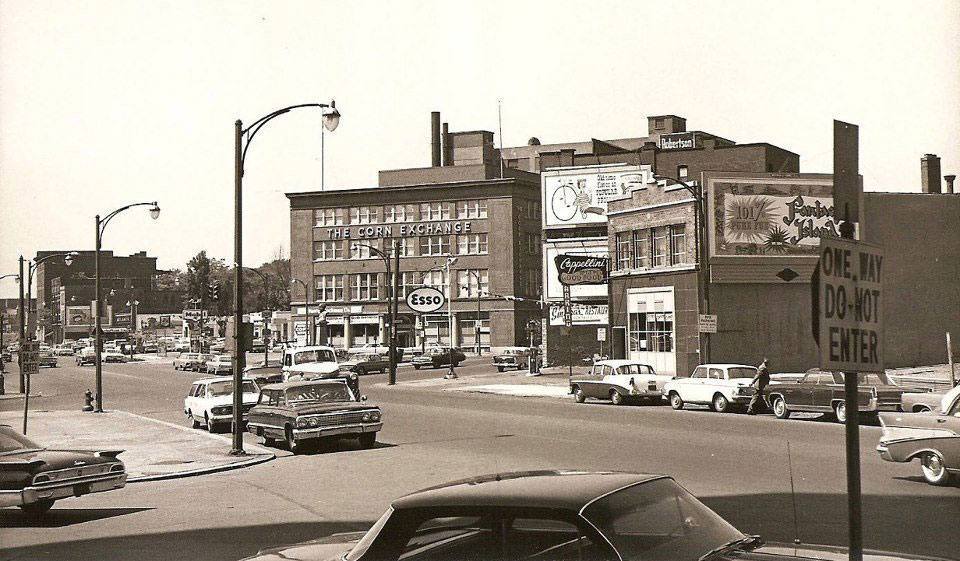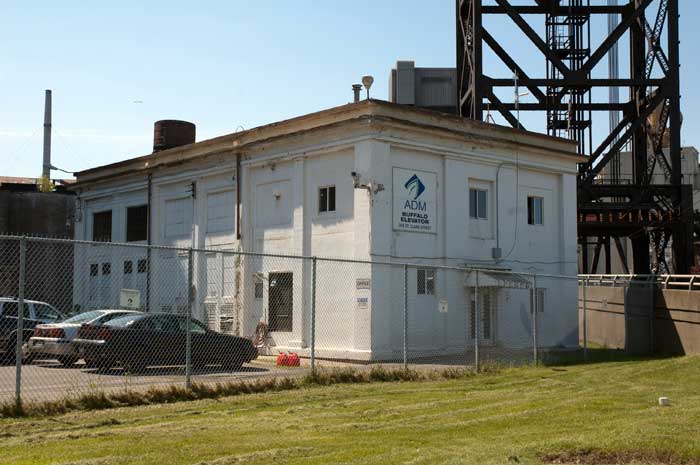The Corn Exchange Part 2: 100 Elmwood Avenue
In 1932, Edgar B. Black, president of the Corn Exchange, said in response to the signing of the U.S.- Canada St. Lawrence Seaway treaty that "eventual result" of the seaway project "will be to make Buffalo a side port to the water commerce of the Great Lakes. This may take a long time, but the beginning of the project begins Buffalo's decline as an important transportation point."
Buffalo's status as the world's greatest grain distribution center collapsed with the opening of the St. Lawrence Seaway in 1959. The historical transfer of grain from the western states had been from lake boat to 'Welland Canal type steamers' for Montreal, or to Barge Canal carriers, or by rail to eastern ports in New York, Baltimore, Philadephia for international export. The Seaway allowed grain boats to bypass Buffalo's rail connections and go directly to these seaboard ports where grain was transferred for overseas export. Before 1959, "more than 200 million bushels of grain arrived in Buffalo in a good year. Afterward, the declining total never topped 100 million. Before the seaway, up to 50 million bushels a year were unloaded in Buffalo, milled and shipped on for export." [NYTimes] But newer, more efficient flour mills were constructed elsewhere and the flour milling business declined precipitously, along with the 60 or more grain boats that wintered over in Buffalo's harbor, full of grain to be consumed by the mills. Rail shipment of grain dropped from 7.5 million bushels in 1958 to 73,600 bushels in 1964.

The Corn Exchange building c. 1965. Image source: David Torke
The Corn Exchange moved its headquarters from the Chamber of Commerce building to the former home of Robertson Electric at 100 South Elmwood in 1955. It moved the 57-foot board and sliding ladder optimistically despite the fact that the St. Lawrence Seaway construction had already begun and the widespread belief in Buffalo that its completion would have a significant economic impact on the local economy.
The new headquarters had more capacity than it had business. Aside from the Seaway, the grain business was undergoing changes. One by one, brokers left the business through retirement or by switching to other fields, reducing membership fee income. The big mills in Buffalo brought grain from their own company stock and inspected it themselves, elminating a source of operating income for the Corn Exchange. Technology interevened, as well, with more grain brokers doing business by phone instead of on the trading floor.
The first cost-cutting casualty for the Corn Exchange was the operation of the trading floor; the big board fell silent in June, 1963 and the clerks were let go. One clerk was retained to monitor the ticker-tape, but that service was too expensive and ceased in April, 1964. That year, only one person occupied the Corn Exchange: Everett H. Flinchbaugh, past president of the Corn Exchange, in the grain business since 1930. His primary task was brokering for customers throughout the Northeast U.S. in animal feed ingredients such as mill and brewery by-products.

1 St. Clair Street, 2012
The Corn Exchange moved to 1 St. Clair Street, renting an office and leaving behind the big blackboards and its name on the building at 100 South Elmwood; it would ever after be called the Corn Exchange building. In 1965, the Catholic Diocese purchased the building for offices. In the 1970s, the Corn Exchange lost its government affiliation and became a third-party inspector. In the 1980s and 1990s, only 20 million bushels of grain arrived in Buffalo annually; three grain elevators were in use. In 1994, the Corn Exchange's sole inspector, Tom Cook, performed 1,800 inspections. And on January 31, 1996, the Corn Exchange of Buffalo went out of business.

2012
After several owners and an attempt to convert the 1915 building into a 200-room Ramada Inn hotel in 2004, the Corn Exchange today is owned by Anthony Baynes & Ken Frey. In 2012, it has been rehabilitated and converted into ten one-bedroom apartments and sixteen two-bedroom apartments with commercial space on the first floor.